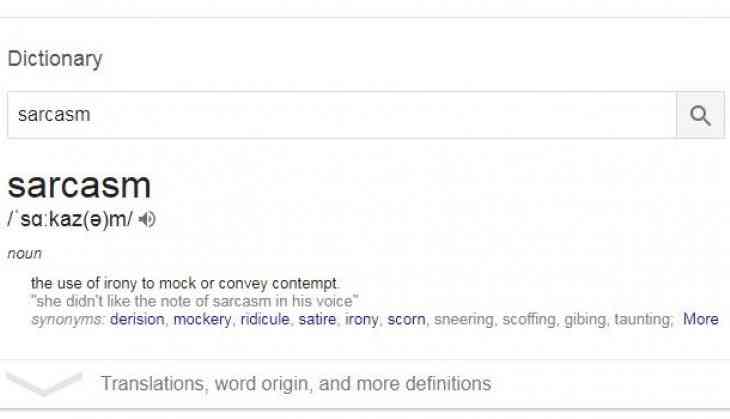How the 'sarcastic' emoji saves your day

That is the official definition of the word sarcasm. Linguist Robert Gibbs best describes it as words used to express something other than the literal meaning of a sentence. A form of satire, it tends to be directed towards a specific person.
For most, it's not always easy to understand if an individual is being sarcastic. Things get murkier as we march ahead in the digital age that is continuously transforming the way we communicate. How do you figure out if a text or email has a hint of sarcasm in it as telecons and online commentary replaces face-to-face conversations?
For example:
Boy: I'm outside. The show starts in 10.
Girl: I'm almost ready. Should be down in 15 minutes.
Boy: I'm glad you're watching the clock today.
This kind of exchange of texts can usually lead to fights. So how do you know if the boy was being sarcastic or just pulling the girl's leg? If she's late, it's highly likely that the boy will be upset and the probability of his response being a sarcastic jab. But if he knows she usually gets late, he was in most probability only pulling her leg.
The trick is to look for: How well does the attitude the writer is conveying agree with the situation and the person?
Nonetheless, the struggle to interpret written sarcasm is real. Studies have shown that people realize that they have a tough time interpreting sarcasm in writing. The main issue is that sarcasm thrives in ambiguous situations.
When delivered in person, sarcasm tends to assume a cutting, bitter tone. But written messages don’t always get that attitude across or give you much else to go on.
Missing signals in texts
Sarcasm replaces violation of social norms. Whether it's criticism at work or praise after a tough situation, sarcasm in person tends to be clearer to listeners as compared to in a written format.
The listener's facial expressions are the best giveaways, and they may look slightly bemused or tense. Equally or more helpful, the speaker's tone is likely to change, too – they may sound more intense or draw out certain phrases.
But then there's a catch too! When you're texting the person in front of you. For example: You're running late to a meeting and in a hurry put on your sneakers in place or your work shoes.(Who is going to see your shoes from under the table, right? Wrong! You enter the conference room after everyone is seated). You'll feel your stomach drop when your colleague texts, “Nice shoes man! They match your tie,” and you look down to see you don't have a tie and you've your Skechers on.
In such cases, we have the ability to artificially make a sincerely spoken statement sound sarcastic.
But what when you text someone who isn't around? There are no facial cues, no vocal tones and maybe even a delayed response if a person can’t text you back immediately. And if you don’t know the person all that well, there goes your last potential cue: history.
Emojis to the rescue?
Fear not. The digital age has developed some ways to mitigate some of the tortuous ambiguity. You can probably include an emoji to make it clearer to a reader something was meant sarcastically. Ambiguity reduced, and facial expression taken care of.
If we’re talking about email, we also have modifications that that can be made to the text. We can italicize or bold words to change the way that a reader interprets the message.
Though social media platforms have given users more tools to communicate their intent, everyone's style of writing and understanding varies. So how do you avoid hurting your partner’s feelings or convey your intent without being taken lightly?
Make sure you update your phone and add the right emoji before sending that 3 am text!


